标签:import 误差 ret must .com learn empty sha transform
五、高维数据映射为低维数据
换一个坐标轴。在新的坐标轴里面表示原来高维的数据。
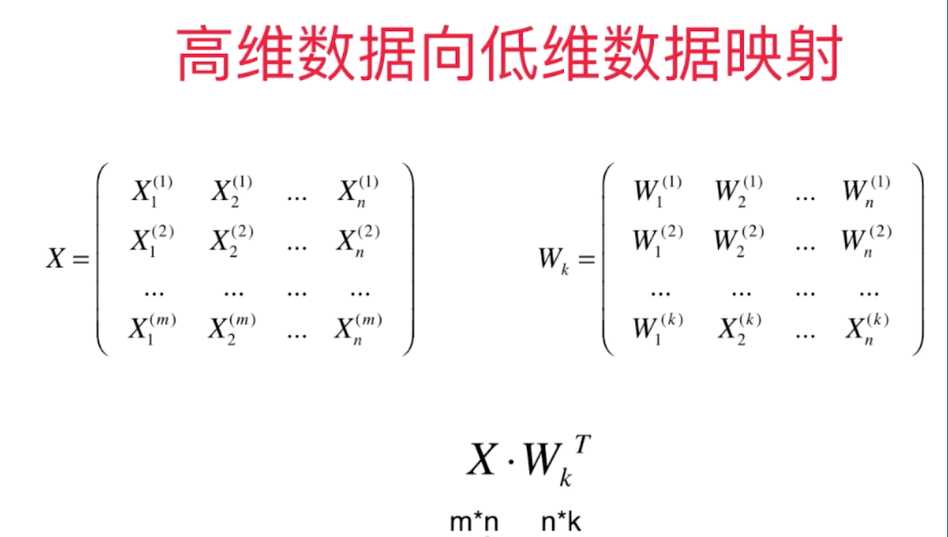
低维 反向 映射为高维数据
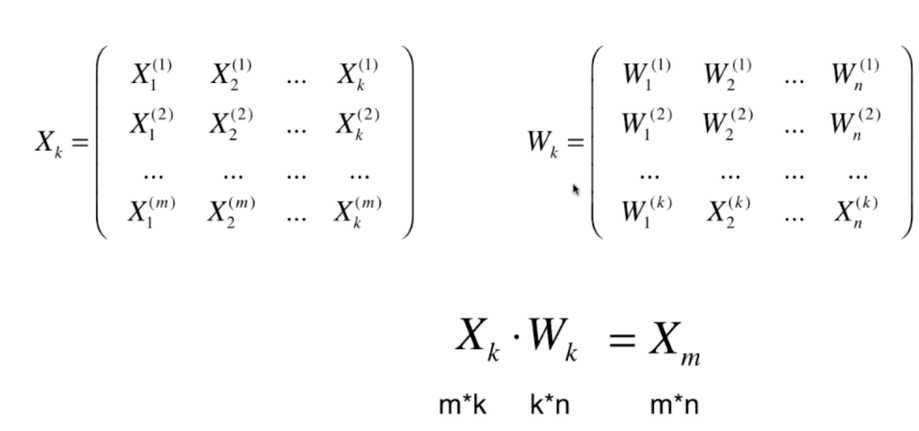
PCA.py
import numpy as np class PCA: def __init__(self, n_components): """初始化PCA""" assert n_components >= 1, "n_components must be valid" self.n_components = n_components self.components_ = None def fit(self, X, eta=0.01, n_iters=1e4): """获得数据集X的前n个主成分""" assert self.n_components <= X.shape[1], "n_components must not be greater than the feature number of X" def demean(X): return X - np.mean(X, axis=0) def f(w, X): return np.sum((X.dot(w) ** 2)) / len(X) def df(w, X): return X.T.dot(X.dot(w)) * 2. / len(X) def direction(w): return w / np.linalg.norm(w) def first_component(X, initial_w, eta=0.01, n_iters=1e4, epsilon=1e-8): w = direction(initial_w) cur_iter = 0 while cur_iter < n_iters: gradient = df(w, X) last_w = w w = w + eta * gradient w = direction(w) if (abs(f(w, X) - f(last_w, X)) < epsilon): break cur_iter += 1 return w X_pca = demean(X) self.components_ = np.empty(shape=(self.n_components, X.shape[1])) for i in range(self.n_components): initial_w = np.random.random(X_pca.shape[1]) w = first_component(X_pca, initial_w, eta, n_iters) self.components_[i,:] = w X_pca = X_pca - X_pca.dot(w).reshape(-1, 1) * w return self def transform(self, X): """将给定的X,映射到各个主成分分量中""" assert X.shape[1] == self.components_.shape[1] return X.dot(self.components_.T) def inverse_transform(self, X): """将给定的X,反向映射回原来的特征空间""" assert X.shape[1] == self.components_.shape[0] return X.dot(self.components_) def __repr__(self): return "PCA(n_components=%d)" % self.n_components
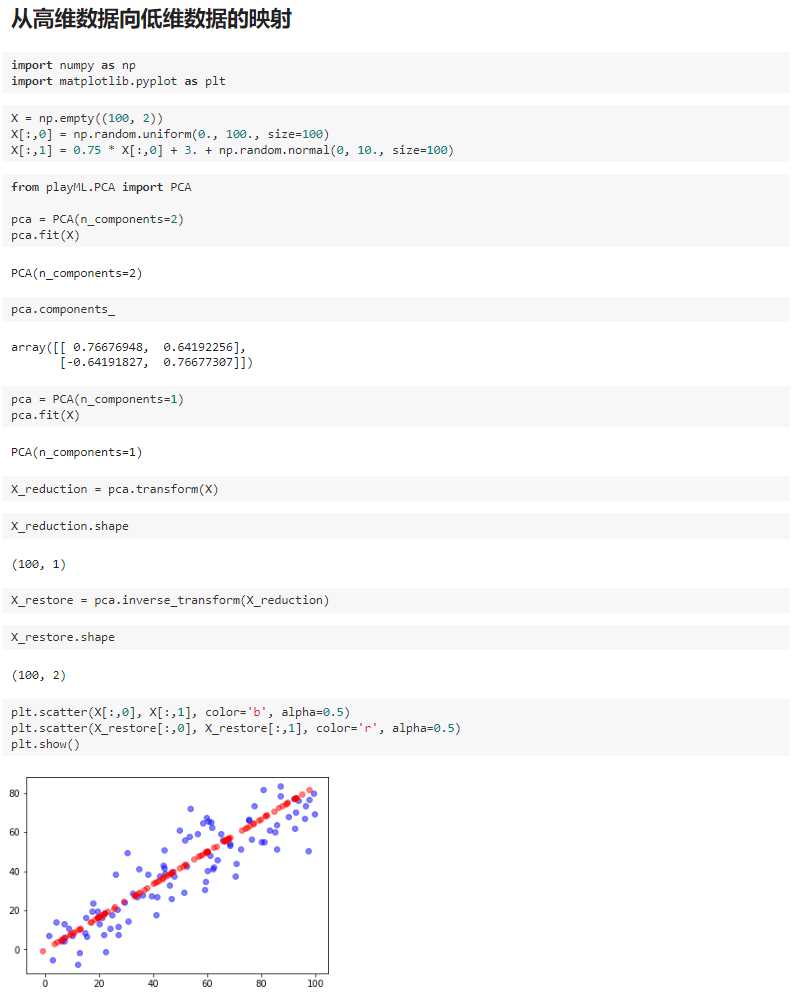
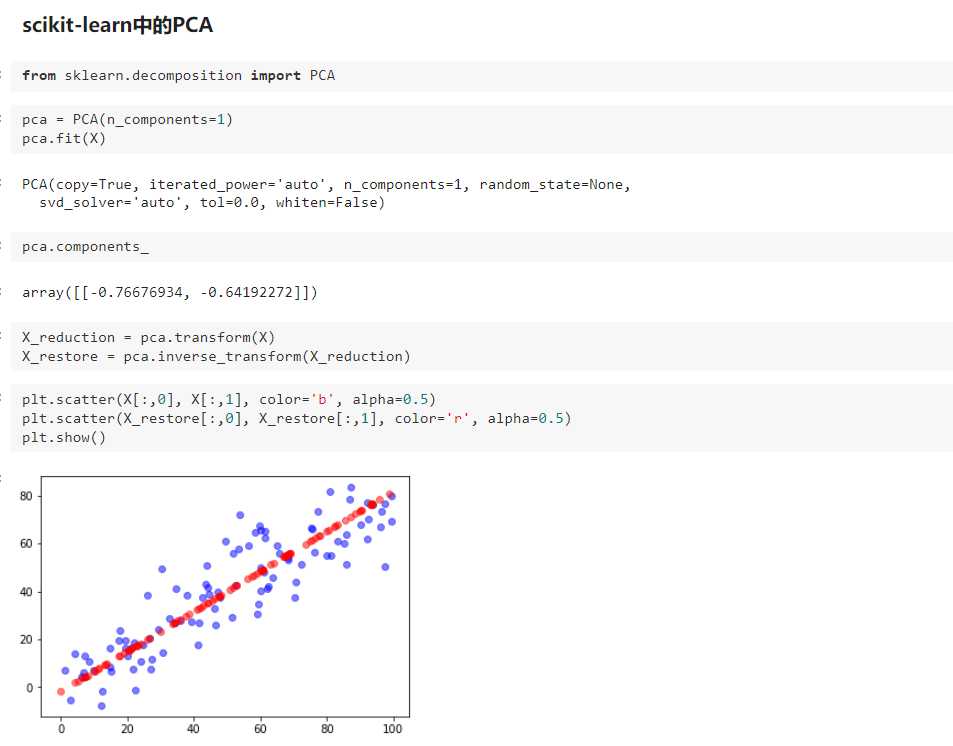
六、scikit-learn 中的 PCA
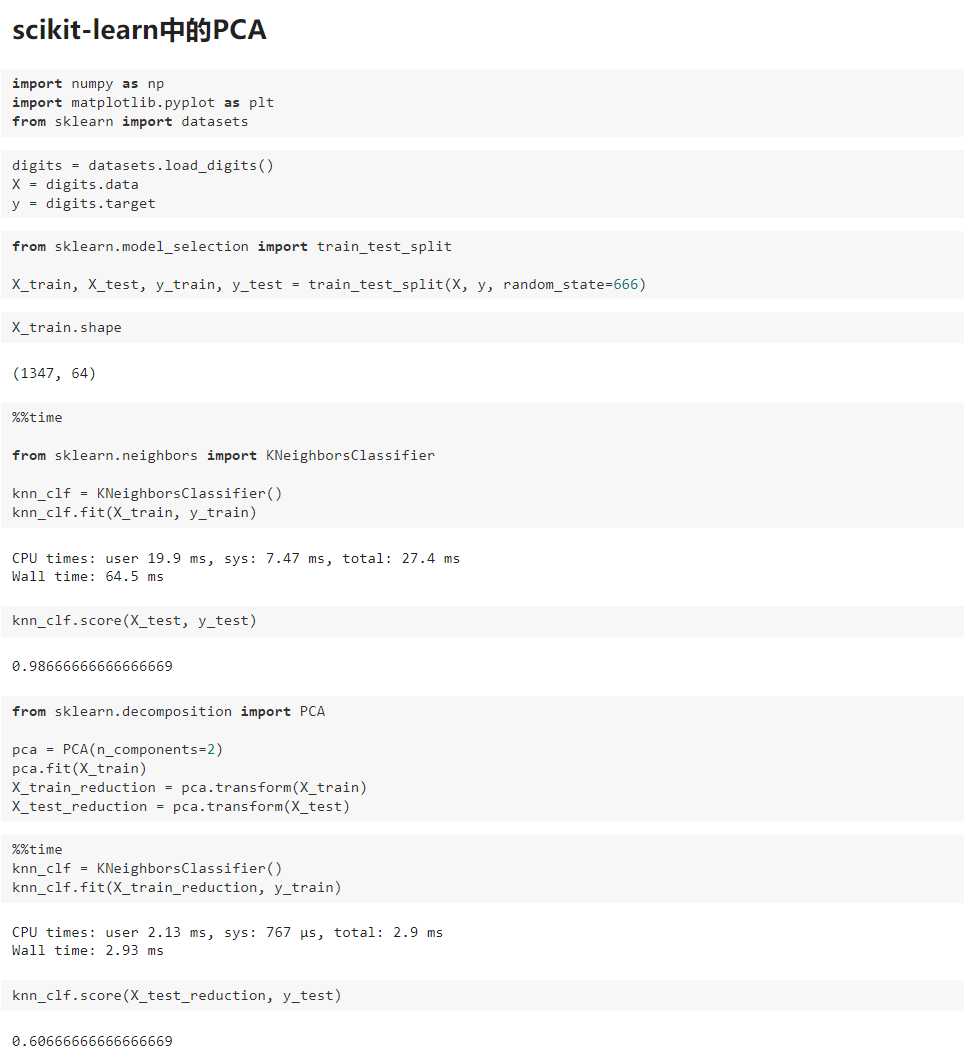

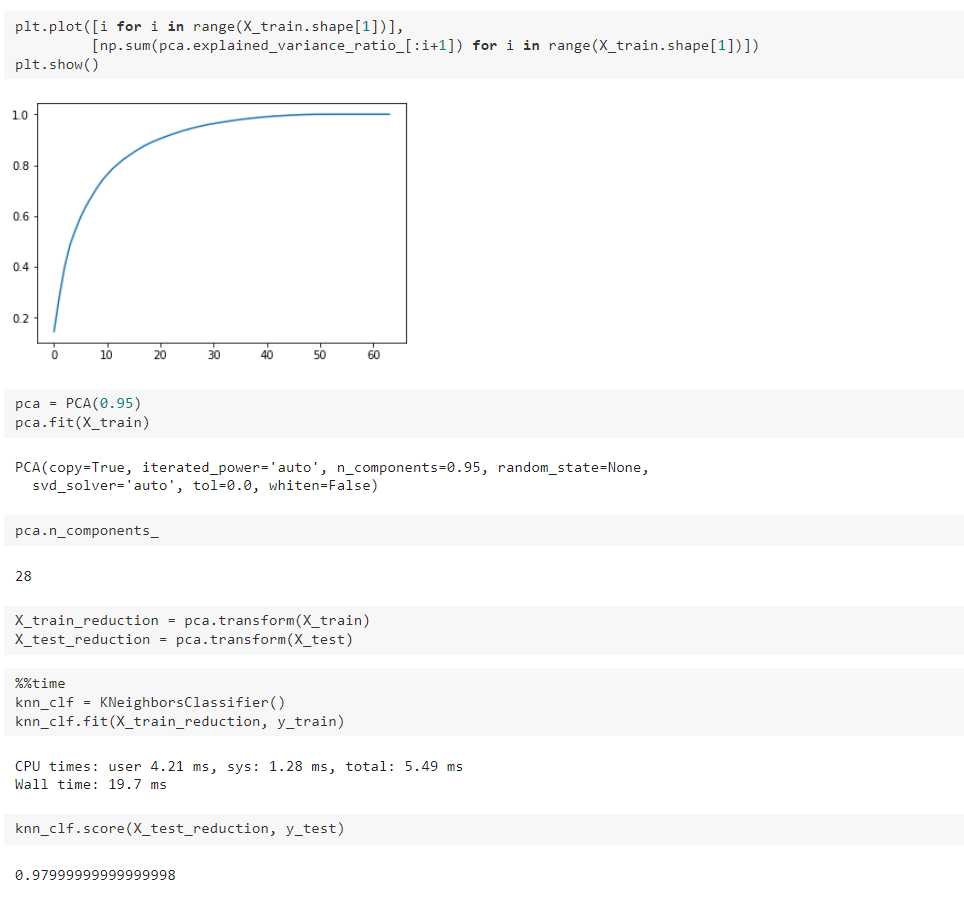
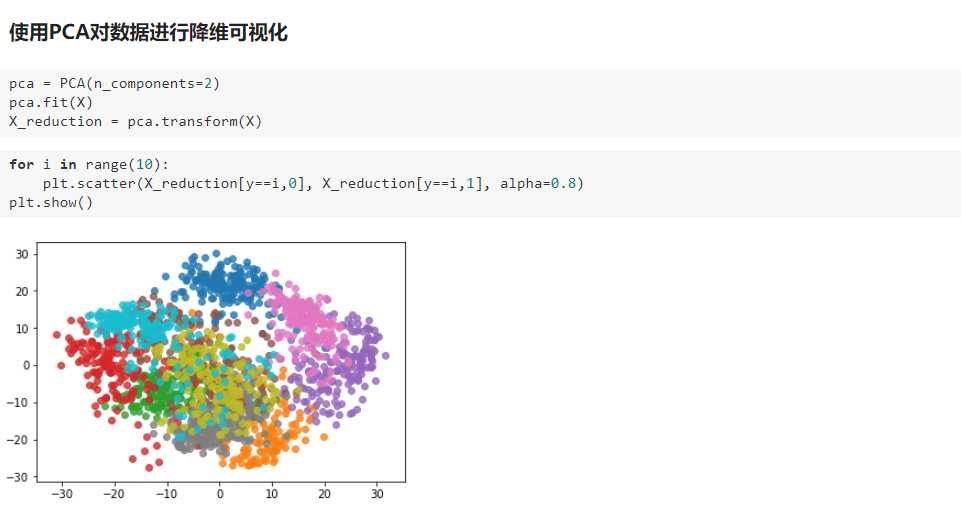
七、试手MNIST数据集
通过单幅图像数据的高维化,将单幅图像转化为高维空间中的数据集合,对其进行非线性降维,寻求其高维数据流形本征结构的一维表示向量,将其作为图像数据的特征表达向量。从而将高维图像识别问题转化为特征表达向量的识别问题,大大降低了计算的复杂程度,减少了冗余信息所造成的识别误差,提高了识别的精度。通过指纹图像的实例说明,将非线性降维方法(如Laplacian Eigenmap方法)应用于图像数据识别问题,在实际中是可行的,在计算上是简单的,可大大改善常用方法(如K-近邻方法)的效能,获得更好的识别效果。此外,该方法对于图像数据是否配准是不敏感的,可对不同大小的图像进行识别,这大大简化了识别的过程
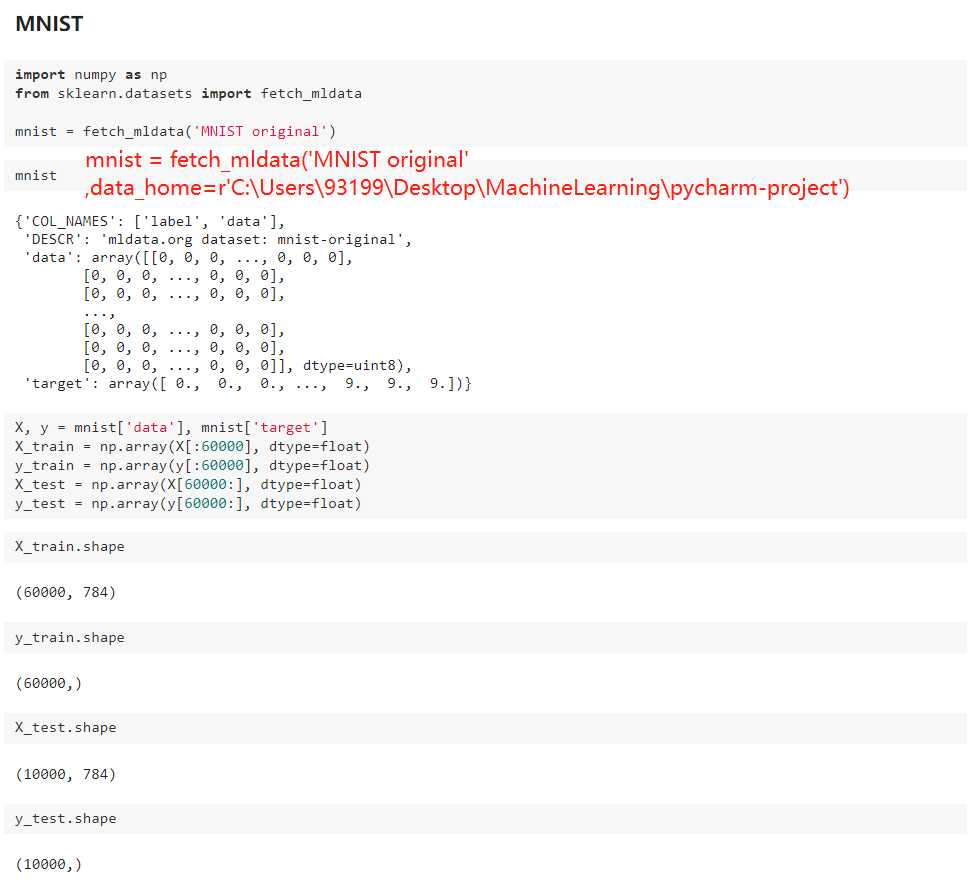
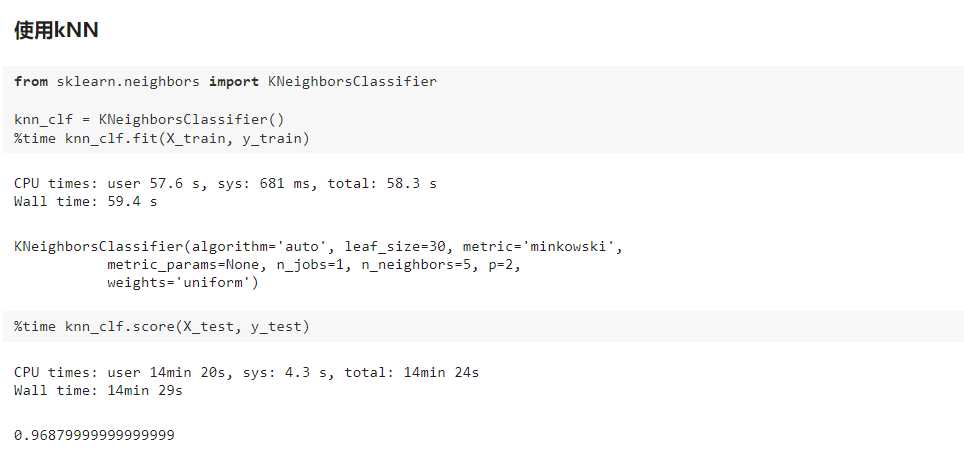
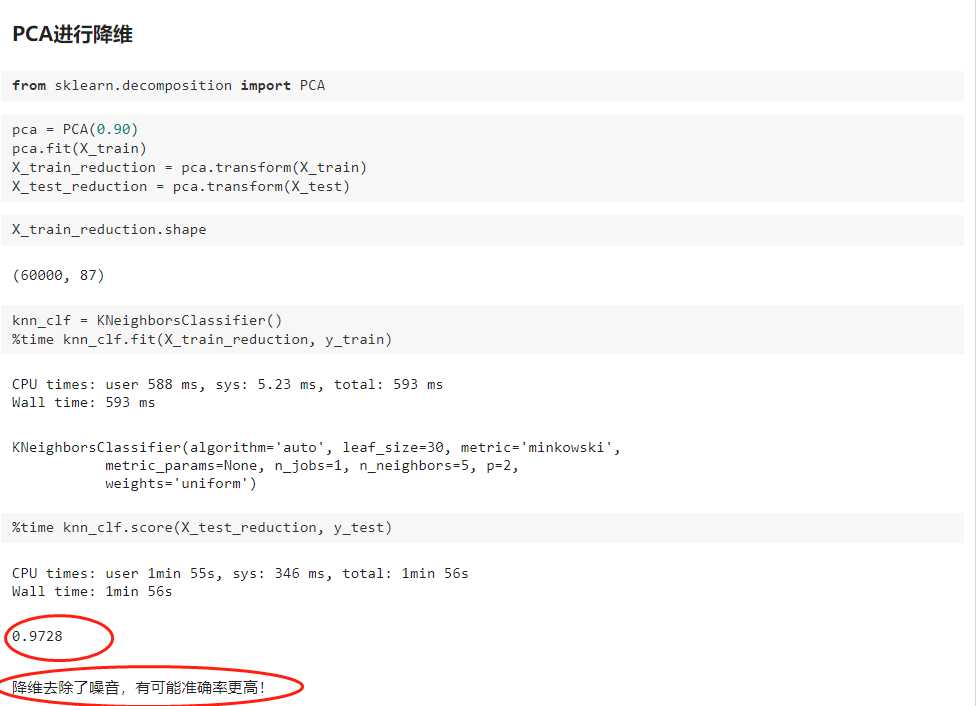
八、使用PCA对数据进行降噪
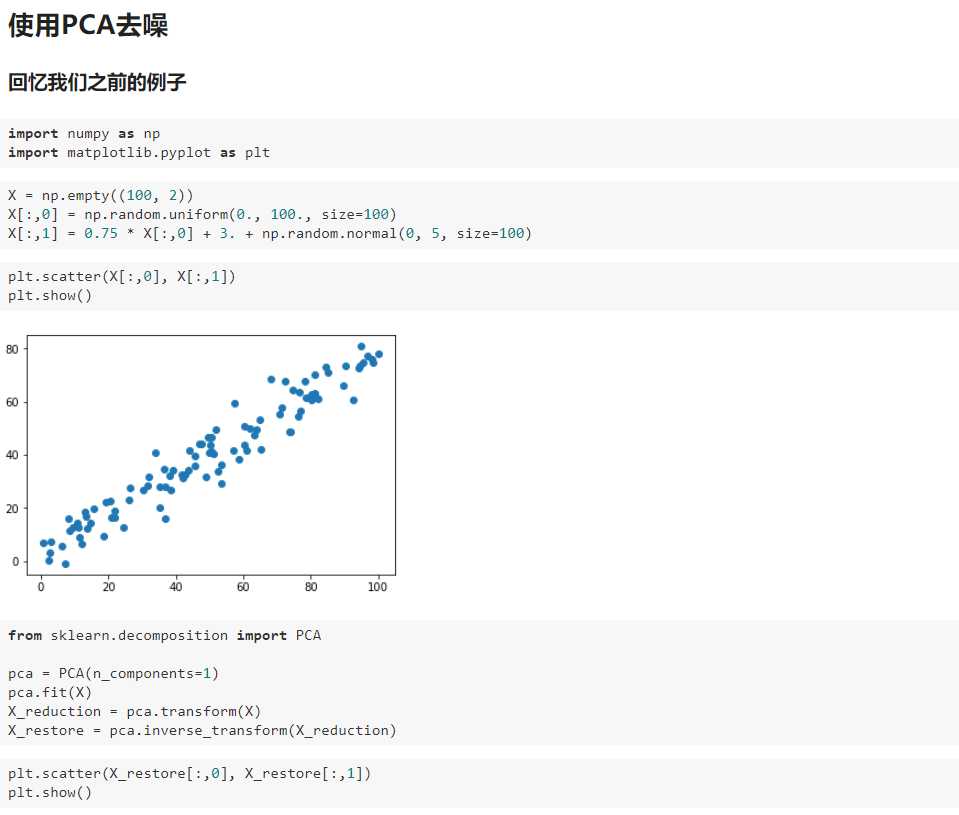
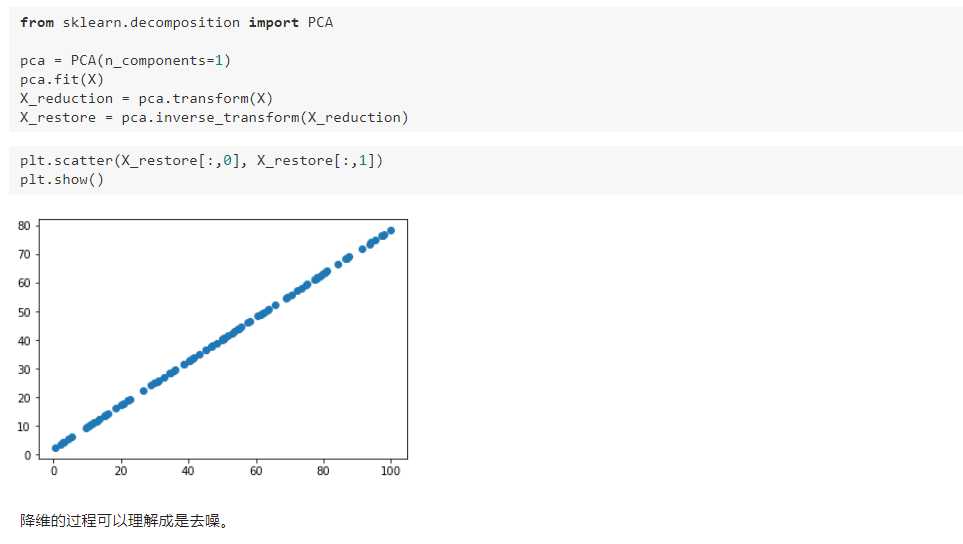

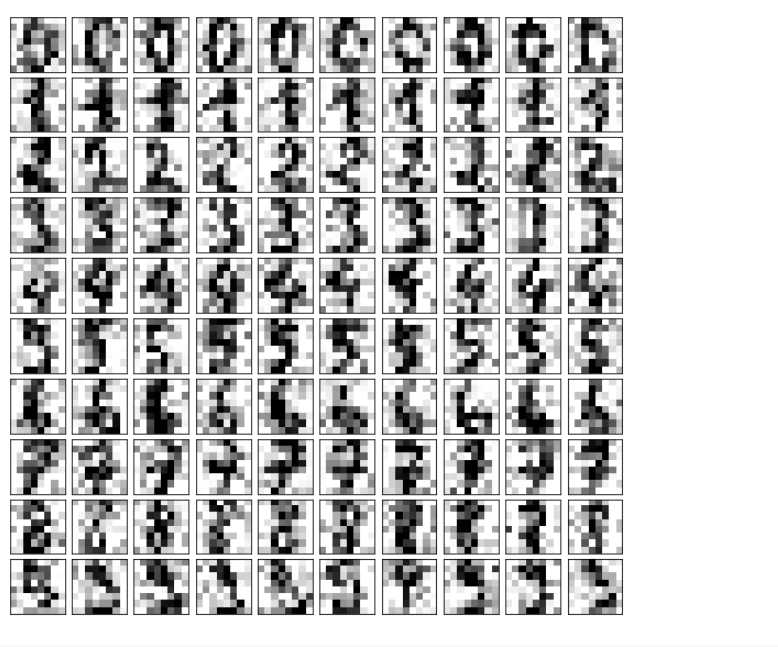
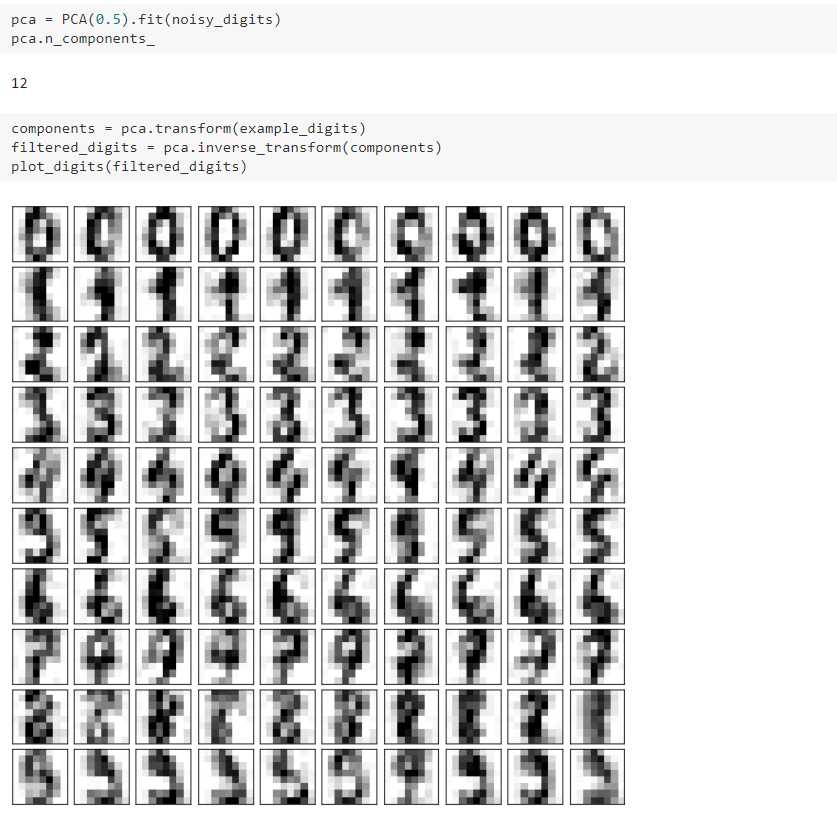
九、人脸识别与特征脸
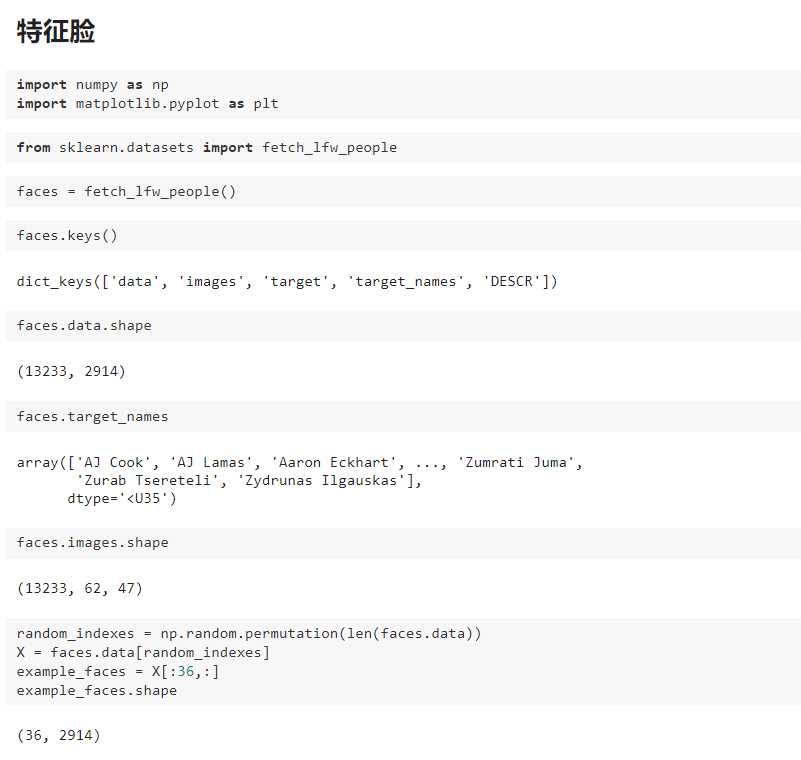
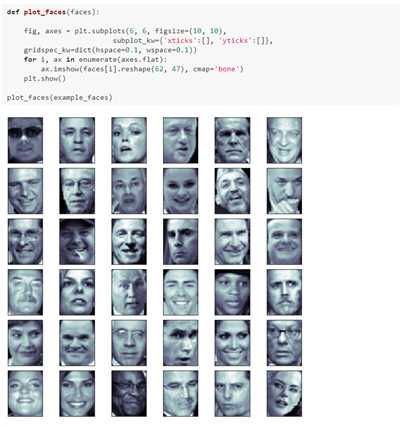
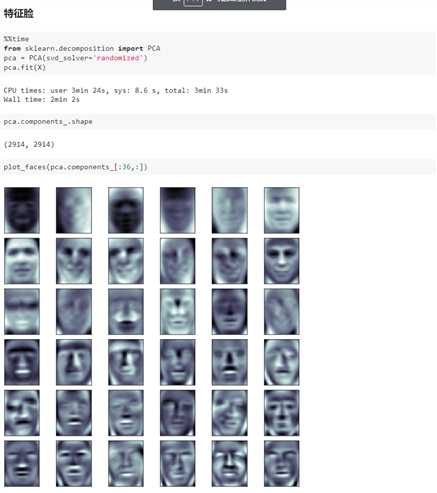

标签:import 误差 ret must .com learn empty sha transform
原文地址:https://www.cnblogs.com/zhangtaotqy/p/9563049.html